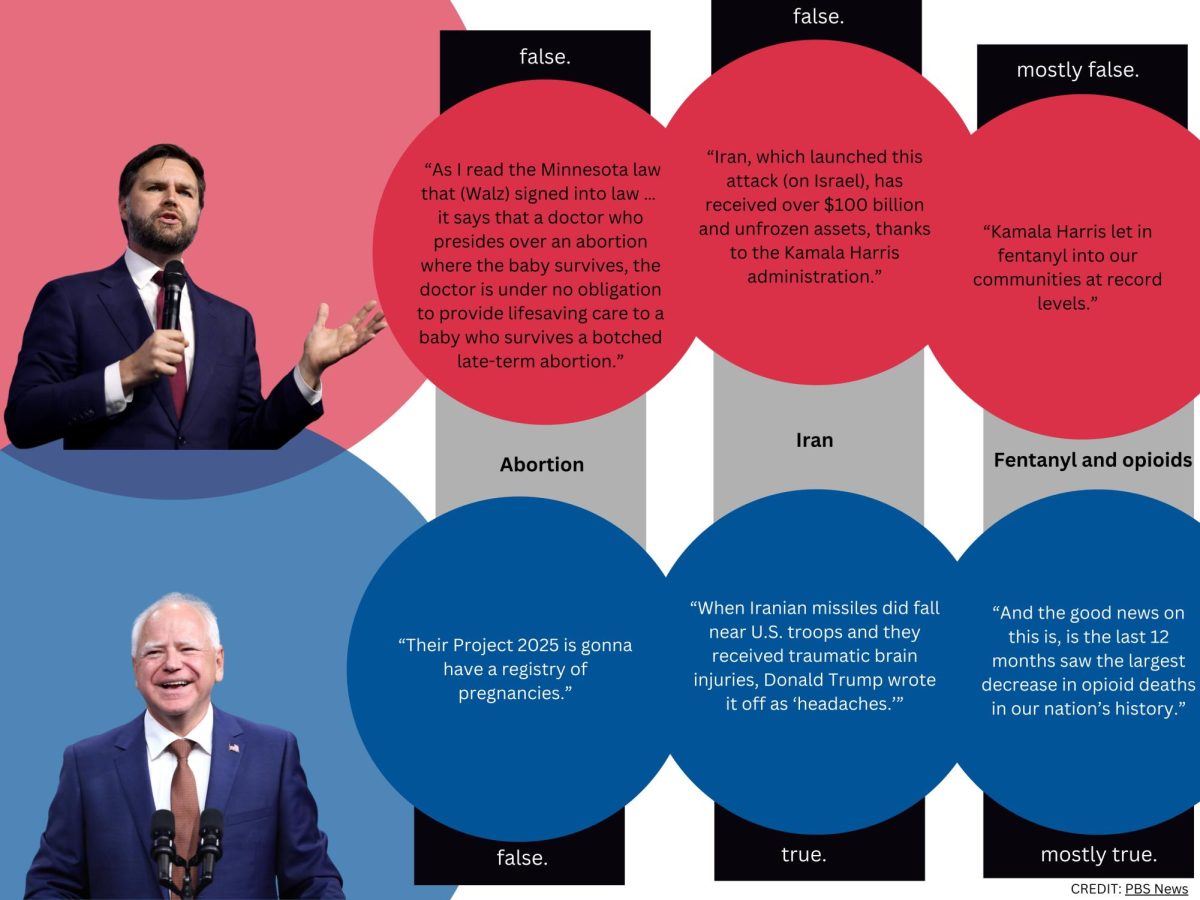Last Tuesday night, just three weeks after the fiery debate between Harris and Trump, the only scheduled debate between their running mates took place. JD Vance and Tim Walz, took a calmer approach on stage, allowing viewers to understand critical differences in the campaign policies.
This debate’s tone differed significantly from the heated insults and interruptions in the Kamala Trump debate. There were moments of unity among candidates and polite remarks between candidates. “It was a lot more chill than the presidential debate,” ninth-grader Addy Davis said after watching the debate with her family.
Senior Marius Morse watched the debate, noting differences in their tone.
“Vance was very well spoke and articulate, at least for most of the debate. But, if you know his policies the you could tell he was being manipulative,” Morse said.

Walz came across as flawed but genuine for Morse: “Walz’s execution could have been smoother throughout the debate but at the same time you could tell he was genuine from the way he was talking even if he was being awkward or nervous,” Morse said.
Ever since the Nixon-Kennedy debate, public perception of tone and character on the debate stage has significantly shaped political outcomes, with an emphasis on appearance over policy. “Unfortunately people look more at how people present themselves and not what they say,” senior Annie Painter said after watching the debate and hearing classmates’ reactions.
Moderators Norah O’Donnell and Margaret Brennan asked questions on hot button voting issues including the economy, abortion, and housing. Abortion particularly, took center stage for Freshman Sophia Karmaliani.
The candidates took opposing stances. JD Vance distanced himself from supporting a national abortion ban, advocating instead for a “minimum national standard,” despite previously expressing support for a nationwide ban. In contrast, Walz pushed for consistent reproductive healthcare across all states citing the stories of Amber Thurman and Candi Miller.
Karmaliani listened to the debate and thought Walz stood out on his abortion answers: “I really like what governor Walz said about abortion… he really understood the policy and way a lot of other candidates didn’t. There were a lot of references to the fact checking of the last debate to clarify misconceptions that came out of it.”
The candidates expressed opposing views on Israel, gun regulation, and immigration. The debate ended on the issue of a peaceful transfer of power, with questions asking Vance to go on record about Trump’s claims that he won in 2020. “This debate highlighted the differences in the candidates’ priorities,” Painter said.
Painter looks forward toward the coming weeks to see how those differences will show up on social media and in conversations at school.
This is the only vice presidential debate on the calendar and the last debate before election day Nov. 5.